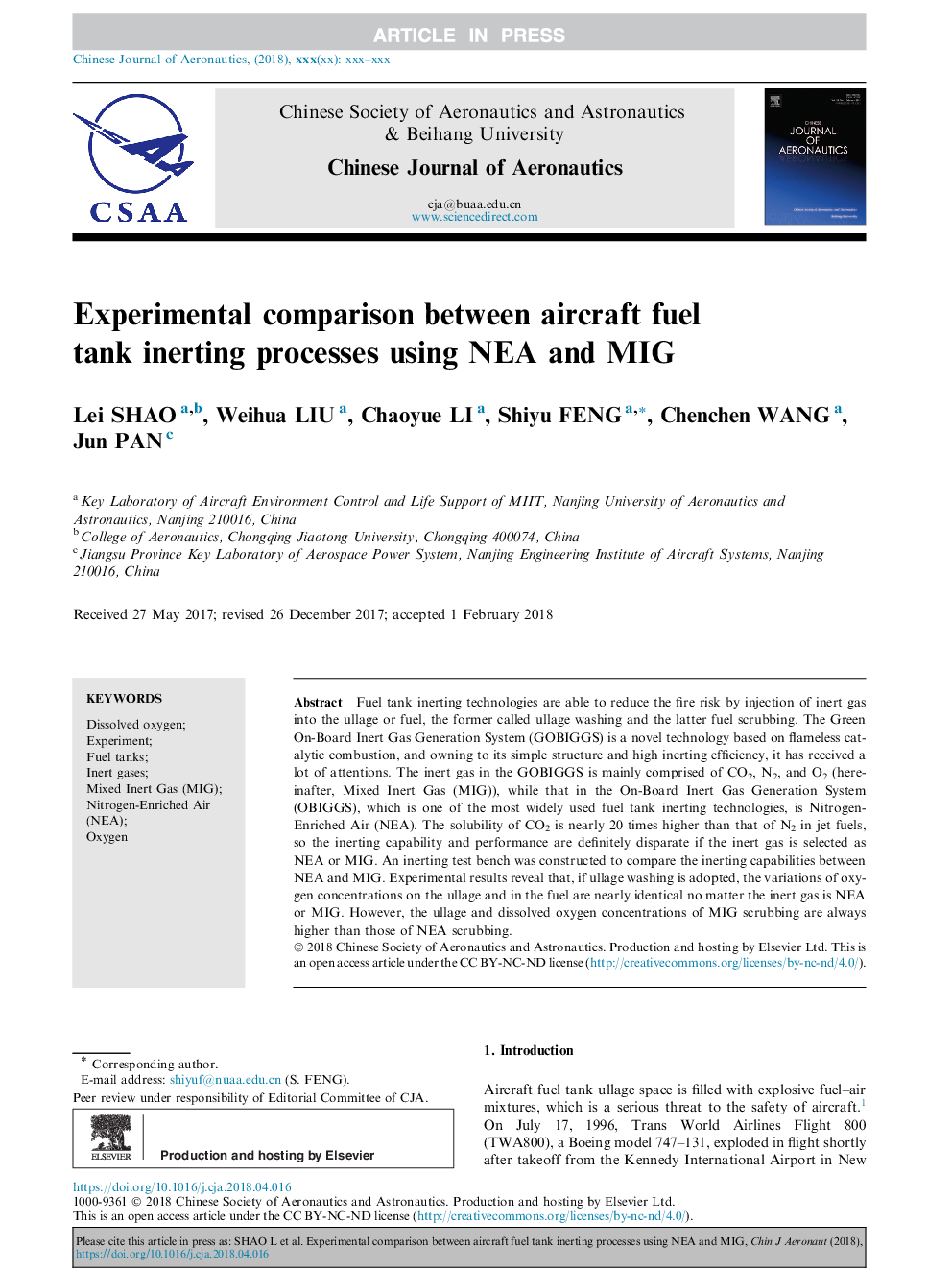| کد مقاله | کد نشریه | سال انتشار | مقاله انگلیسی | نسخه تمام متن |
|---|---|---|---|---|
| 7153554 | 1462485 | 2018 | 10 صفحه PDF | دانلود رایگان |
عنوان انگلیسی مقاله ISI
Experimental comparison between aircraft fuel tank inerting processes using NEA and MIG
دانلود مقاله + سفارش ترجمه
دانلود مقاله ISI انگلیسی
رایگان برای ایرانیان
موضوعات مرتبط
مهندسی و علوم پایه
سایر رشته های مهندسی
مهندسی هوافضا
پیش نمایش صفحه اول مقاله

چکیده انگلیسی
Fuel tank inerting technologies are able to reduce the fire risk by injection of inert gas into the ullage or fuel, the former called ullage washing and the latter fuel scrubbing. The Green On-Board Inert Gas Generation System (GOBIGGS) is a novel technology based on flameless catalytic combustion, and owning to its simple structure and high inerting efficiency, it has received a lot of attentions. The inert gas in the GOBIGGS is mainly comprised of CO2, N2, and O2 (hereinafter, Mixed Inert Gas (MIG)), while that in the On-Board Inert Gas Generation System (OBIGGS), which is one of the most widely used fuel tank inerting technologies, is Nitrogen-Enriched Air (NEA). The solubility of CO2 is nearly 20 times higher than that of N2 in jet fuels, so the inerting capability and performance are definitely disparate if the inert gas is selected as NEA or MIG. An inerting test bench was constructed to compare the inerting capabilities between NEA and MIG. Experimental results reveal that, if ullage washing is adopted, the variations of oxygen concentrations on the ullage and in the fuel are nearly identical no matter the inert gas is NEA or MIG. However, the ullage and dissolved oxygen concentrations of MIG scrubbing are always higher than those of NEA scrubbing.
ناشر
Database: Elsevier - ScienceDirect (ساینس دایرکت)
Journal: Chinese Journal of Aeronautics - Volume 31, Issue 7, July 2018, Pages 1515-1524
Journal: Chinese Journal of Aeronautics - Volume 31, Issue 7, July 2018, Pages 1515-1524
نویسندگان
Lei SHAO, Weihua LIU, Chaoyue LI, Shiyu FENG, Chenchen WANG, Jun PAN,